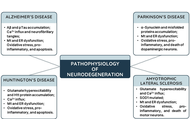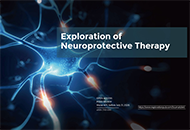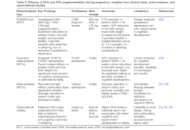124 results in Exploration of Neuroprotective Therapy
Latest
Sort by :
- Latest
- Most Viewed
- Most Downloaded
- Most Cited
Open Access
Review
Resveratrol’s potential in the prevention and treatment of neurodegenerative diseases: molecular mechanisms
Mac Dionys Rodrigues da Costa ... Tiago Lima Sampaio
Published: November 20, 2025 Explor Neuroprot Ther. 2025;5:1004124
This article belongs to the special issue Neuro-Inflammation as a Target in the Design of Multifunctional Drug Candidates for Neurodegenerative Diseases

Open Access
Review
The role of the glymphatic system in cerebral ischemia: pathological implications and future perspectives
Renata Murguiondo-Pérez ... Antonio Ibarra
Published: November 20, 2025 Explor Neuroprot Ther. 2025;5:1004123
This article belongs to the special issue Therapeutic Targets for Neuroprotection in Ischemic Stroke

Open Access
Original Article
Resveratrol and salidroside, but not curcumin, improve cognition in mice with gut inflammation via microbiome modulation
Ekaterina P. Krutskikh ... Artem P. Gureev
Published: November 17, 2025 Explor Neuroprot Ther. 2025;5:1004122
This article belongs to the special issue Natural Products in Neurotherapeutic Applications

Open Access
Review
A comprehensive insight into baicalein and baicalin: neuroprotective perspectives in Alzheimer’s disease
Prerna Sarup ... Sonia Pahuja
Published: November 12, 2025 Explor Neuroprot Ther. 2025;5:1004121
This article belongs to the special issue Natural Products in Neurotherapeutic Applications

Open Access
Review
Analyzing the therapeutic and preventive potential of probiotics in Alzheimer’s disease: a scoping review
Adnan Akhtar Shaikh ... Niveditha Nair
Published: November 03, 2025 Explor Neuroprot Ther. 2025;5:1004120
This article belongs to the special issue Role of Microbiota in Neurological Diseases

Open Access
Review
Gene therapy for Parkinson’s disease: a new frontier in neurodegenerative diseases
Abraham Olufemi Asuku ... Grace Ayobami Fajemidagba
Published: October 30, 2025 Explor Neuroprot Ther. 2025;5:1004119
This article belongs to the special issue Parkinson's Disease: Principal Targets and Interventional Mechanisms

Open Access
Perspective
Plasma p-tau217 in Alzheimer’s disease is a dynamic gauge of progression heterogeneity, not a baseline stratifier
Rafael Franco
Published: October 16, 2025 Explor Neuroprot Ther. 2025;5:1004118

Open Access
Mini Review
From burnout vs bounce-back: risk, protection, and interventions strategies for rehabilitation professionals
Ayesha Inam, Muhammad Ahmed
Published: October 16, 2025 Explor Neuroprot Ther. 2025;5:1004117

Open Access
Original Article
A brief, comprehensive measure of post-exertional malaise
Leonard A. Jason, Kelly J. Chee
Published: October 14, 2025 Explor Neuroprot Ther. 2025;5:1004116

Open Access
Perspective
Exercise is neuroprotection—but participation is the imperative
Elizabeth A. Franz
Published: September 16, 2025 Explor Neuroprot Ther. 2025;5:1004115
This article belongs to the special issue Empower Yourself - Physical Activity as Prevention and Rehabilitation of Neurological and Psychiatric Diseases

Open Access
Original Article
A questionnaire-based study on cranio-cervical-mandibular symptoms in clarinet students
Ludovica Badino ... Lucio Marinelli
Published: August 27, 2025 Explor Neuroprot Ther. 2025;5:1004114

Open Access
Original Article
Cognitive and neuropsychiatric outcomes in economically active young patients with epilepsy: a case-control study from a secondary medical center in Mexico
Rodolfo Manuel Román-Guzmán ... Ilse Sofía Dávalos-Higareda
Published: August 20, 2025 Explor Neuroprot Ther. 2025;5:1004113

Open Access
Review
An integrative review on the orexin system and hypothalamic dysfunction in myalgic encephalomyelitis/chronic fatigue syndrome: implications for precision medicine
Noé López-Amador
Published: August 13, 2025 Explor Neuroprot Ther. 2025;5:1004112

Open Access
Review
Therapeutic potential of microRNAs in neurological disorders: mechanisms, biomarkers, and emerging therapeutic strategies
Sourav Pal, Subhajit Mandal
Published: July 14, 2025 Explor Neuroprot Ther. 2025;5:1004111

Open Access
Review
ADHD and alexithymia comorbidities impact on developmental language disordered and autistic youths: a dimensional treatment approach
Yvette Hus, Osnat Segal
Published: June 22, 2025 Explor Neuroprot Ther. 2025;5:1004110
This article belongs to the special issue Advances in the Pathogenesis, Diagnosis and Treatment of Attention Deficit Hyperactivity Disorder

Open Access
Original Article
Higher mortality in stroke patients with active COVID-19 infection
Mostafa Almasi-Dooghaee ... Abdol-Hossein Vahabie
Published: June 22, 2025 Explor Neuroprot Ther. 2025;5:1004109

Open Access
Original Article
Passive immunization against amyloid peptide restores pattern separation deficits in early stage of amyloid pathology but not in normal aging
Karin Herbeaux ... Céline Héraud
Published: June 16, 2025 Explor Neuroprot Ther. 2025;5:1004108

Open Access
Review
Omega-3 fatty acids and fetal brain development: implications for maternal nutrition, mechanisms of cognitive function, and pediatric depression
Raghd M Ghazal, Moawiah M Naffaa
Published: May 28, 2025 Explor Neuroprot Ther. 2025;5:1004107

Open Access
Systematic Review
The effects of high-intensity training on walking speed and endurance in the subacute phase poststroke: a systematic review
Alejandro Ojeda-Manzano ... Alexandra Borstad
Published: May 22, 2025 Explor Neuroprot Ther. 2025;5:1004106

Open Access
Review
Neuroinflammation—the role of heteroreceptor complexes
Neelakanta Sarvashiva Kiran, Senthilkumar Rajagopal
Published: May 12, 2025 Explor Neuroprot Ther. 2025;5:1004105
This article belongs to the special issue GPCR Heteroreceptor Complexes as Key Players in Neuroprotection

Journal Information
 Previous
Previous